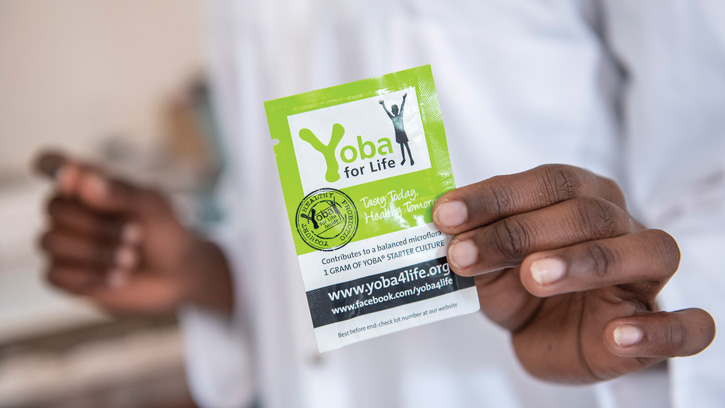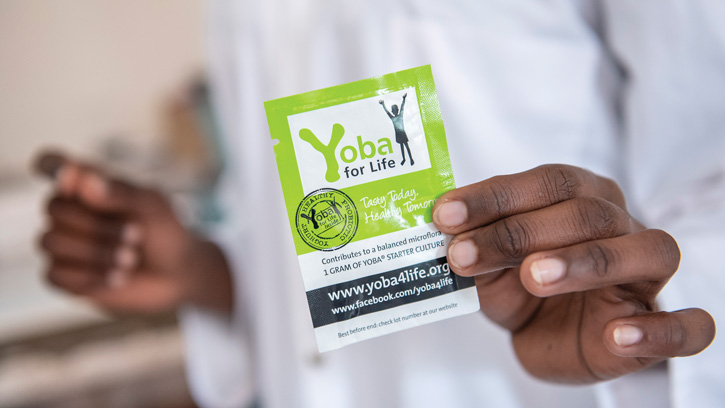New Probiotic Boosts Health in Africa
Food Security | INNOVATIONS
Many people are aware of the health attributes of yogurt, but a food science innovation has taken its health benefits to a whole new level in nearly 200 communities in Africa. That innovation comes via Yoba for Life, a program that provides African dairy co-ops and entrepreneurs with simple tools and shelf-stable cultures to transform locally produced milk into healthy, probiotic yogurt.
The Yoba for Life Foundation, a Dutch nonprofit organization, was started by food biotechnologist Wilbert Sybesma and microbiologist Remco Kort in 2009. Their goal was to develop a low-cost probiotic with science-backed health benefits that could be used to make yogurt in dairy-producing communities in Africa. (The name “Yoba” is derived from “yogurt bacteria.”)
The scientists identified Lactobacillus rhamnosus GG (LGG), the most extensively researched probiotic to date, as the gold standard for efficacy. The health benefits of LGG include reducing and preventing diarrhea, infections, and allergies (Segers and Lebeer 2014). Since LGG was a patented probiotic, however, Sybesma and Kort set about developing a “generic” strain (a first for probiotics). Their efforts paid off with Lactobacillus rhamnosus yoba 2012, a variant of LGG with the same health-supporting mechanisms.
The next challenge became how to grow L. rhamnosus yoba 2012 in milk since, unfortunately, it cannot ferment lactose. The solution came by using an adjuvant culture, Streptococcus thermophilus C106, which could convert lactose into glucose and galactose as food for the yoba culture. This strategy enabled the L. rhamnosus yoba 2012 to reach final levels of 1x109/mL, a dose sufficient to be effective as a daily probiotic (Kort et al. 2015). The final steps involved making the probiotic cultures shelf-stable through freeze-drying, grinding, and blending with maltodextrin before packing into pre-portioned, watertight sachets.
With the R&D complete, the Yoba for Life program was launched in 2012 at Life Dairy in Kateete, Mukono district in Uganda. By 2014, the program was expanding quickly throughout Southwestern Uganda, with Yoba for Life providing support that included facility design, process and food safety training, and the provision of probiotic cultures. The production of Yoba yogurt uses simple, accessible methods. The milk is pasteurized in a saucepan and added with the cultures into large milk cans for an eight-hour fermentation. Then, sugar and flavors are added, and the yogurt is packaged into polyethylene pouches for retail sale.
Dairy cooperatives, women’s groups, and local entrepreneurs were among the first to embrace the Yoba for Life model. By June 2018, there were 116 production units making Yoba yogurt. A total of 704 people were employed in the value chain—from milk collection and production to distribution and sales (Westerik et al. 2019).
Today, the Yoba for Life program can be found throughout East Africa, with several hundred production units operating across Uganda, Tanzania, Kenya, and Ethiopia. Yoba yogurt is also being integrated into school feeding programs. One study compared Ugandan children who participated in a school feeding program offering Yoba probiotic yogurt with children in the same region receiving milk instead. Results showed a significant reduction in incidence of common cold symptoms and skin infection symptoms in the probiotic yogurt group (Westerik et al. 2020).


